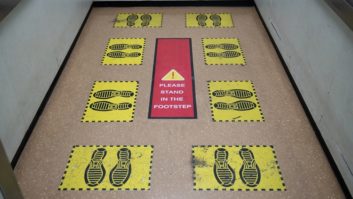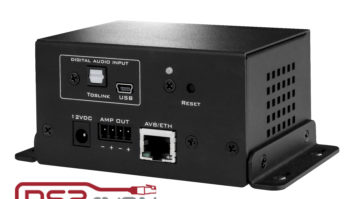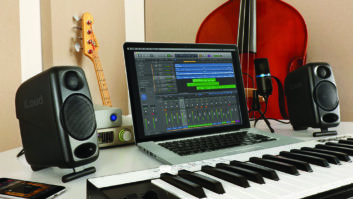Remember when a Crown DC 300 was considered a “monster” power amplifier? And then came the Phase Linear 700. Now, today, a kilowatt of audio power is no big thing, and there are amps up to 10 kW.
This brings up an interesting question. If these plug into 120 VAC and a 20 amp breaker, that’s a maximum of 2,400 watts. (And any electrician will tell you not to run 20 amps through a 20 amp breaker for too long.) These might not be RMS watts, but that’s not the point of the story.

Have you looked at your speaker cable? Is it the appropriate class, and so marked? Most speaker cables, like these, are not class anything. The point is that the speaker output terminals of the super-power amplifiers can now kill you. And what that means is that UL and other safety organizations have taken note of the potential for harm from what used to be a peanut-power output.
The proof is to look on the back of these super-power amps; you will see some odd writing. It will say “Class 2 Wiring Shall Be Used.” Or it might say “Class 1 Wiring Shall Be Used” or similar words. What do those mean?
NEC
Class 1 and Class 2 wiring can be found in the National Electrical Code in Article 725.
That section is titled “Class 1, Class 2 and Class 3 Remote Control, Signaling and Power-Limited Circuits.” You can get a copy of the NEC at any technical bookstore, or order it from the National Fire Protection Association at (800) 344-3555.
I have a copy; after reading Article 725, I thought (naively) that I would summarize the requirements here.
Well, it’s a lot more complicated than that and would take up a few columns. If you want to know the details, buy the book. If you want to wire up your amplifier, see what is written over the speaker outputs and do what it says.
So, if you have a super-power amplifier, what does it say on the back? Class 1? Class 2? And have you looked at your speaker cable? Is it the appropriate class, and marked so on the cable?
Most speaker cables are not class anything, so it becomes a question of safety and liability. This applies to permanently installed amplifiers as well as those on the road. If it says Class 1, then use Class 1.
Some power amp manufacturers are now suggesting much larger gauges for these huge amps. 10 AWG, 8 AWG, even as huge as 6 AWG (5 kW at more than 150 ft.). The question is, can you get 6 AWG Class 1? Sure you can! It’s called “Industrial” cable. It’s intended for wiring up factories. Just go buy some.
Buying
Now if you go to your local audio-video store, it is unlikely that they will even know what you are talking about (much less have some in stock).
Better to go to one of those “big” distributors and maybe even ask to talk to their industrial salesperson. Hopefully, they will cut by the foot because this stuff is expensive. In fact, a lot of industrial cable is sold only in huge quantities (5,000 or 10,000 ft.) and often isn’t even manufactured until you order it, so an industrial distributor would be even more valuable.
And it probably would be a good idea to get a short sample before you order it just to see that the conductors will actually fit in the output connectors of your power amp. A 6 AWG wire is one hefty conductor.
If your amp has a special connector on it, like a Neutrik Speakon, you need to know if the cable you are buying will fit into the connector.
You’re going to buy some plugs anyway, so you can find out from the Neutrik Web site how big a cable they will take. Those Speakons come in two, four or eight conductors, and go up to 10 AWG wire.
After that you’d better have a serious barrier strip or other termination method. And will those fit the cable? A cable sample would be a really good idea.
The other reason a sample would be a good idea is if you’re going to take this on the road. Then you want the cable to be reasonably flexible so you can pack it up and throw it in the truck. A pair of 6 AWG conductors weighs around 30 lbs. per 100 ft. So your speaker cables are going to be short. And you’re going to need reliable high-current connectors to extend them. You might have a talk with that same industrial salesperson about connectors.
These cables are also going to have high-strand counts (lots of small wires in each conductor) to be flexible. That means even more expensive.
Steve Lampen has worked for Belden for 18 years and is multimedia technology manager and product line manager for entertainment products. His latest book “The Audio-Video Cable Installer’s Pocket Guide” is published by McGraw-Hill.




